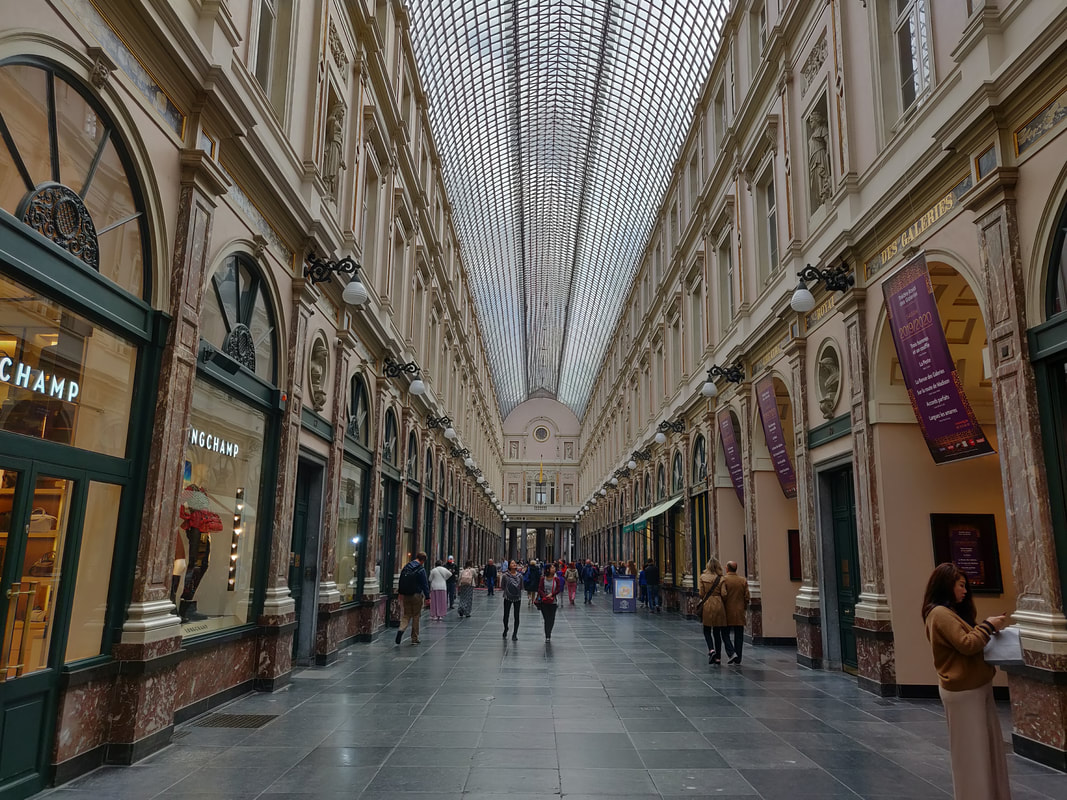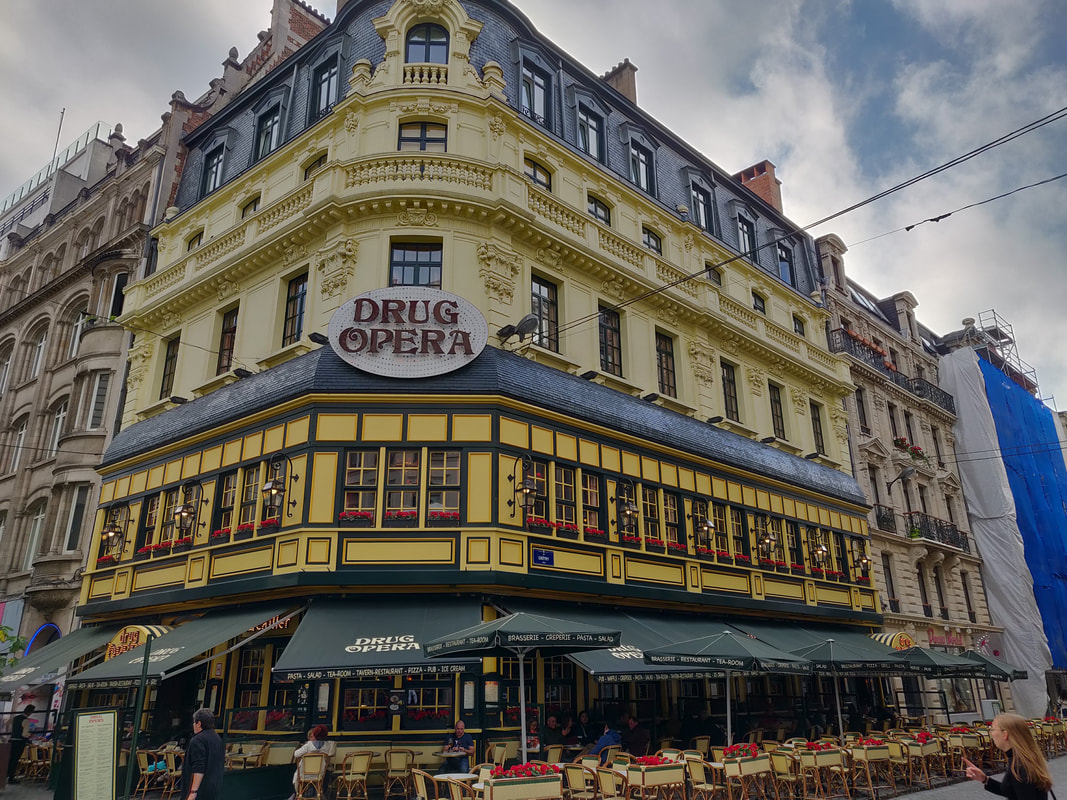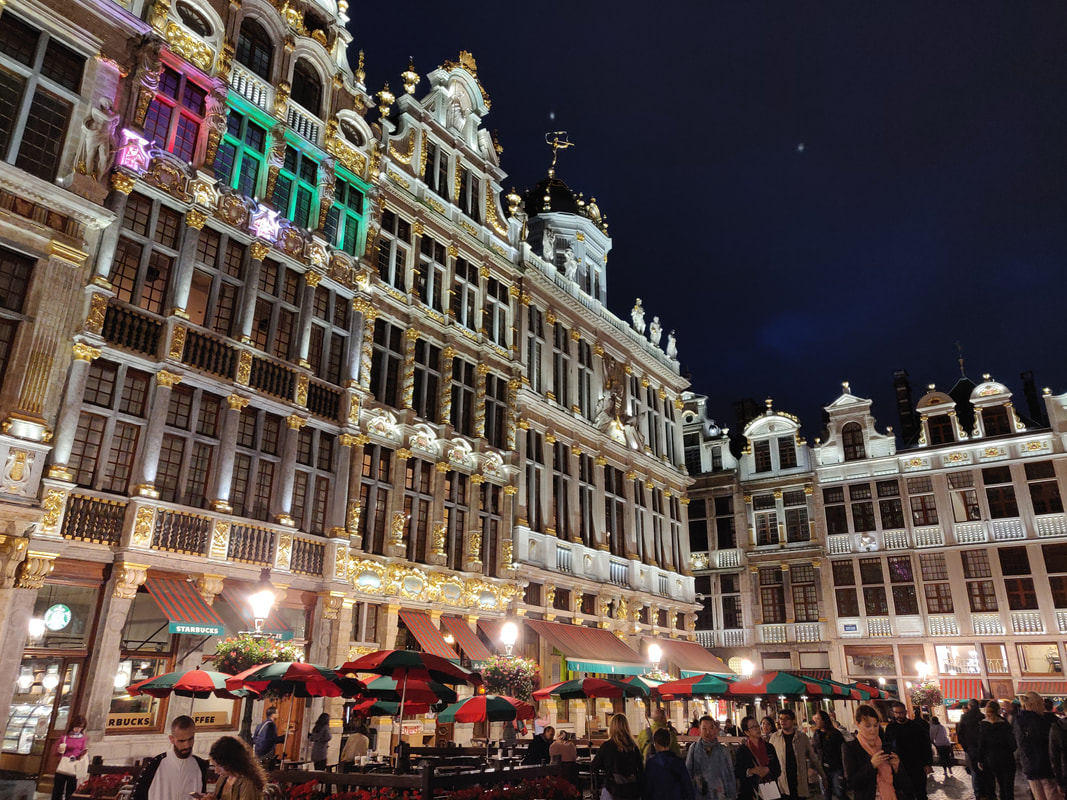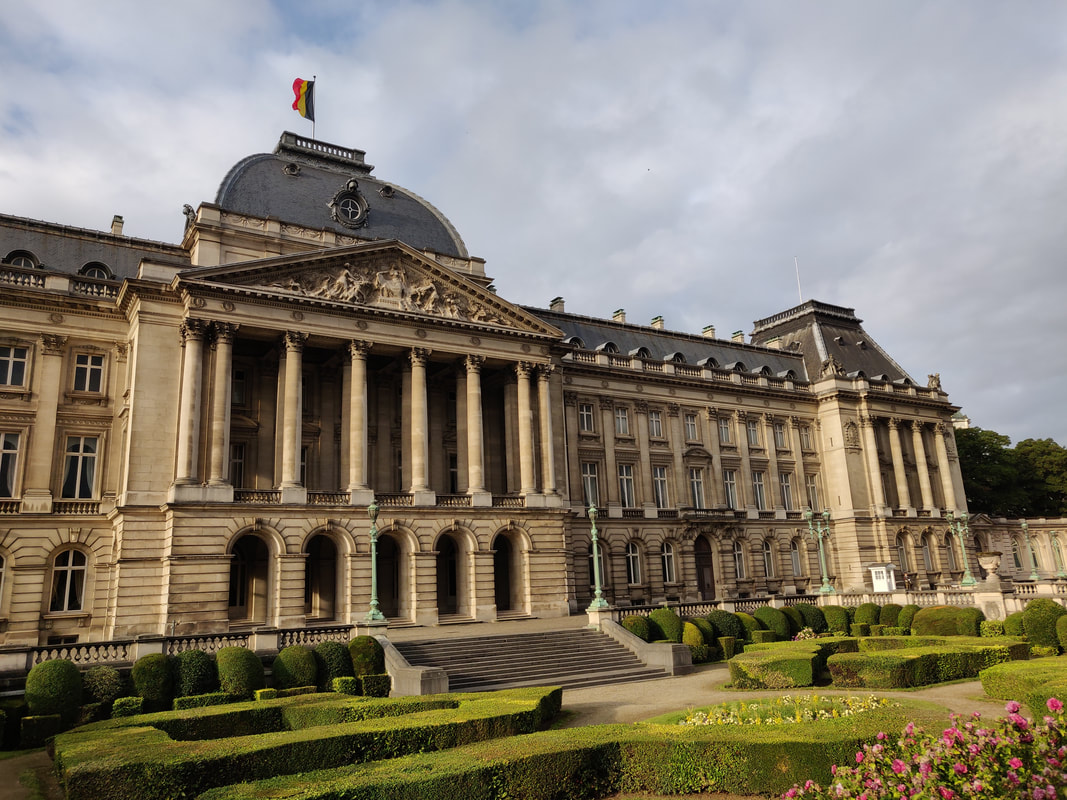SummaryAirport Rating n/a Reception of locals ***** Cost: ££££
From County to CapitalHow did a small, relatively unimportant city become the headquarters of NATO and the de facto capital of Europe? Well, geography more than anything. Despite being settled since the beginning of recorded history, it wasn't until the 11th century that Brussels became a valuable city, and it was largely due to geography. Placed on the River Senne, it became an important trade route between France, the Low Countries and the German territories to the east. It was shortly after this that the city got its first (and soon after, second) set of walls, as well as its own the cathedral, the beautiful (and still standing) St Michaels and St Gudula. By the 15th century, Brussels had grown into an international city, first serving as the capital of the Burgundian Netherlands, and then the largest empire in Europe at the time, the Habsburg. The next few hundred years were one of war and conflict. The city was devastated by the French in 1695 and was attacked and occupied by many different forces for the next 250 years, including the Austrians, French, Dutch and Germans. It served as the capital of the Belgian Empire from 1830, and following Britain, was one of the earliest industrialised cities in the world. It was during this time that the city's traditional Dutch population (the Flemish) was replaced by a larger French presence (the Walloons). Belgium is split into a mainly Dutch speaking north, and a French speaking south. Brussels is the exception as it's a French majority enclave in the Dutch north, and although officially it is bilingual, more than 90% of the city speaks French as a primary language. Despite being occupied by the Germans twice in the 20th century, the city was spared of damage, and in post war Europe its position between France and Germany, a geographical coincidence, meant it was chosen to host many EU and other international institutions, making this relatively small city of 1.2 million (about the same size of Birmingham), the de factor capital of the European Union. The historic coreThe core of the city, like many other European cities, is visually beautiful - but the core in Brussels is extremely small - limited to a few blocks, and once you get outside these, it becomes a tangled mess of a city. In many respects this is similar to my experience of Frankfurt, and in others, to Washington DC. Much like Frankfurt, the city is made for efficiency and transportation of workers, and less focused on having a 'soul'. And like Washington DC, I found it pretty ironic that the capital of one of the world's major powers had such a high rate of poverty and homelessness. I saw whole families lying on mattresses throughout the day and night on the sides of streets. This happening next to the corridors of power that control the western world. I also find it strange that in continental Europe, the main train station is usually in an exceptionally deprived area. Think about the Gare du Nord in Paris or the Central Station in Naples. It's quite the opposite in England, with the major stations in cities like London and Birmingham being in the core of the city. Brussel's Midi station was in one of these areas; reminding me of a 1990's Birmingham (or a current Frankfurt). The city centre itself though, unsurprisingly given the city's history - has character and some beauty. The Royal Gallery of Saint Hubert, for example, is a high ceilinged shopping centre that is opulent in its appearance (pictured). The shops are a little pretentious, but as a piece of architecture it really is quite stunning. Cobbled streets and narrow alleywaysMy favourite parts of European cities are the narrow streets in the centre. Most of the older cities have them, and Brussels is no exception - although the area is relatively small. What did surprise me, however, is that some of the roads are still cobbled and cars still drive over these streets. In fact, during a rainstorm, the taxi I was in skidded bumblingly over the street, almost hitting two bollards near the pavement. The city centre doesn't have the uniform beauty of Vienna, Paris or Edinburgh but it still has some beautiful buildings. The absolute centre of this is the Grand Place, the heart beat of the city. I'm not a big fan of public squares (tourist traps with questionable entertainers), but this is by far the most beautiful square I have seen anywhere in the world - I know that's a strong statement, but I stand by it. The square has two main buildings on opposite sides of the square, but the square is framed by incredible buildings on all sides. On one side is the Town Hall, a 15th century medieval building that tops off at almost 100 metres tall. The spire is so tall you can see it from surrounding streets, but it fits perfectly into its environment and doesn't look at all out of place. Directly opposite is the King's House, built a century later, and currently a museum dedicated to the city's history. This Gothic masterpiece was my favourite building, and if I write a list of my 10 favourite pieces of architecture around the world - this would likely make the list. Both buildings were rebuilt after the destruction of the whole Grand Place square by French troops in 1695 during the Nine Years' War - and while that's a shame, the current version of the King's House is a significant improvement on the original structure. Tanks and YanksOne of the things I enjoyed about Brussels was the availability and large scale use of electric scooters. I signed up for Lime, a ride and park service that specialises in electric scooters while I was in London, but with a fantastic transportation network back home I haven't used it much. In Brussels, it was perfect. A 40 minute walk from Grand Place to Parc du Cinquantenaire was cut to a 15 minute ride on the electric scooter, and cost less than €4. It also meant I could see sights along the way, like the massive St Michael and St Gudula cathedral. It was, unfortunately, closed by the time I got there, but from the outside looked very similar to the Notre Dame in Paris. I also managed to see the very large Royal Palace, surrounded by roads made entirely from cobblestone. Like Buckingham Palace, it's not where the Royal Family lives, but it is where they exercise most of their royal functions. The ride wasn't perfect, the cobblestone part of the route had my eyes shaking in their sockets, but I felt safe, and it was a fun way to get through the city (via the Parc du Bruxelles). The Parc du Cinquantenaire, first created in 1880, is relatively nondescript but the arch, added in 1905 gives it a unique appearance and makes it much more different than just another green space with a few a sculptures thrown in as many other city centre parks have. The park was built to commemorate the 50th anniversary of Belgian independence, with arch added for the 75th anniversary. The park is home to a military museum and an art and history museum. As I walked toward the arch, I saw a lot of smoke and realised there was an event on the other side, and it turns out the military museum was hosting an event with a number of world war era tanks, armoured personnel carriers and other gun batteries on display. Many of these vehicles were American, with the star spangled banner on display next to French, British and Belgian flags. I always find it strange to see no mention of south Asian soldiers, even though a considerable number (more than Australians, Canadians etc.) died within Belgium's borders fighting for its independence. The European QuarterI hung out in the park for a short while, watching the tanks drive past, and then be loaded onto lorries to move to their next destination, before jumping back onto my electric scooter and heading toward the European Quarter, a very short ride from the Parc du Cinquantenaire. Everyone back home seems to have strong feelings about the EU, and over the past ten years I've gone through periods of hating it, to liking it and then finding myself somewhere in between - but there's no doubt it has done some wonderful things - perhaps most impressively, bringing an end to centuries of warfare in western Europe. After Germany invaded France three times in a century, the geography of Brussels as the capital of a relatively small country between two centuries' old enemies made it a natural capital for a new European order. Brussels is now the home to the European Commission, the Council of the European Union and NATO. And just like Westminster has become synonymous with the British Government, references to Brussels are understood as synonyms for the EU. I'll be honest, I was surprised with just how ugly the buildings were. They have a giant footprint, reflecting the thousands of people that must work in the Commission and Council buildings, but they just look like big factories, with absolutely no character about them. They aren't particularly tall, or quirky, just big slabs of buildings on the edges of the street. Maybe, like many other parts of the city, they are designed to be functional rather than beautiful. Either way, I didn't stick around too long. European eveningsBelgium is famous for its fries and mayo and its waffles, and you can see (and smell) both of these all over the city. The food in general in Belgium was really good, but like the rest of the city, a little expensive. I returned to the Grand Place in the evening and the beautiful square looked even better. Different coloured lights lit up the perimeter of the square, with the spire of the Town Hall looking particularly impressive. The bars and restaurants were spilling onto pavements, and the narrow streets surrounding the square seemed to come to life. One of the things I love about continental Europe is walking through dimly lit cobblestone streets at night, and although the area was relatively small, it still had an energy about it that I enjoyed. It was also at night that the problem with rough sleeping became even more evident - in fact, walk just a few streets out of the main square and whole streets were lined with mattresses full of families sleeping rough. People were fighting the in the streets, and many of the younger men had bloodshot eyes and the uneasy gait of intoxication. It might be the centre of the EU, but like Washington, the dichotomy of power and powerlessness made me feel a little uneasy. You can tell how good a state is by its treatment of the most vulnerable, and it seems that migrants are nothing but cheap labour for the EU and European companies with little regard to them as people (an accusation long levelled against the EU). Is Brussels worth visiting?The Grand Place is the best square, or plaza, I have ever been to - but outside of that, I'd find it difficult to recommend a trip to Brussels. It's a friendly enough city, but it just isn't that appealing to me. There's a word in the English language called Brusselisation and it refers to poor urban planning and development, where modern buildings are randomly put up, with the indiscriminate destruction of buildings of historical importance. The funny thing is, unlike cities in England like Birmingham that lost some of their beautiful historical buildings following their destruction in the Second World War, Brussels lost its beauty with the introduction of the EU institutions. The city became one of function and transportation of workers, Buildings were demolished by Belgians themselves to make way for random skyscrapers, or factory-like monoliths. This all means that, other than a few streets in the core City of Brussels, the rest of it is, well, a little uninspired.. My friend lives and works there and describes the little city as a bit of a village, and I can see that. Perhaps, like Frankfurt, if I had spent a bit more time there I would appreciate some of its quirks and efficiencies. But saying that, it's probably not a city at the top of my list of places I'd go back to. Comments are closed.
|
AuthorBritish Sikh, born in the Midlands, based in London, travelling the world seeing new cultures. Categories
All
|









 RSS Feed
RSS Feed